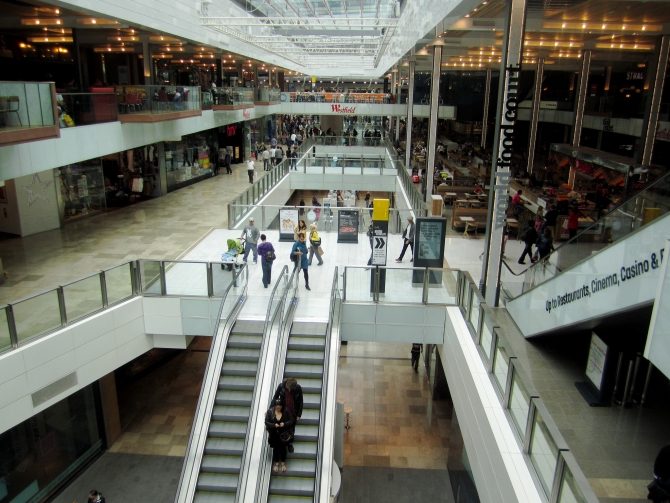Shopping centres throughout the country are seeing huge levels of investment as owners seek to improve their appeal to retailers looking to expand. This has seen vacancy rates plummet, with recent data from the Local Data Company (LDC) and the British Council of Shopping Centres (BCSC) showing a much steeper pace of recovery than in town centres.

According to the partnership’s Shopping Centre Vacancy Monitor, vacancy rates within shopping centres have shown a year on year improvement of 0.8 per cent nationwide. In other words, there are now 242 fewer empty units within shopping centres than this time last year.
The data indicates that independent retailers are taking huge steps to shrink the national vacancy rate – as, although within the top 30 shopping centres in the UK less than one in five units house independent retailers, on a national level 49 per cent of shopping centre units are occupied by an independent brand. BCSC chief executive Michael Green believes that this is an immensely positive step forward for both occupiers and shopping centre owners.
He says; “Contrary to popular opinion, independent retailers now account for one out of every two shops in British shopping centres.
“We expect this to increase over the next six months as more and more shopping centre owners look to vary what they are offering to their shoppers.
“There is, of course, no doubt that where a shopping centre is struggling – usually because of an oversupply of retail space – it is the large chain stores that leave first: independents, in extreme cases, can be the last people standing.”
Somewhat surprisingly, when the data is broken down to compare regional variations, Wales is shown to be the strongest performer with a year on year decrease of 5.2 per cent in vacancy rates. Scotland is also continuing to perform well, with 2.2 per cent fewer unoccupied shopping centre units since 2013.
Unfortunately, while some areas in England have performed admirably, the country’s overall improvement of just 0.5 per cent leaves much to be desired. Although the South East saw a drop of 3.7 per cent in vacancy rates, this was dragged down by the North East, North West and London, with the latter managing to post just a 0.6 per cent improvement and the first two posting vacancy increases of 2.4 per cent and 4.4 per cent respectively.
Mr Green continues; “It is positive to see shopping centres reducing the numbers of empty shops and doing so at a faster rate than the towns in which they sit.
“As they are managed as single entities with management strategies to match, they are well placed to adapt to changing retail dynamics: it is clear that these changes will result in a need for an increasingly diverse mix of businesses, particularly as a number of traditional retailers look to consolidate the amount of physical space from which they trade.
“Shopping centre owners are working hard to fill empty shops and, with almost 250 extra businesses trading now than this time last year, it is clearly paying off.”
Previous Post
Arch unveils Flagship Blyth Office Scheme